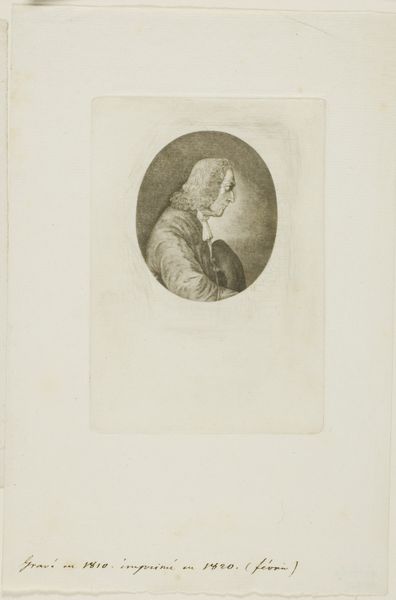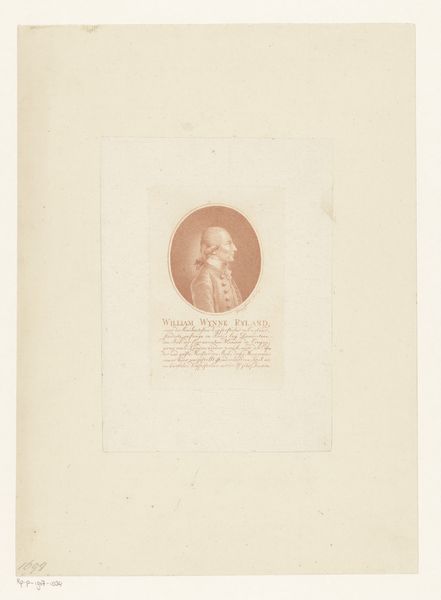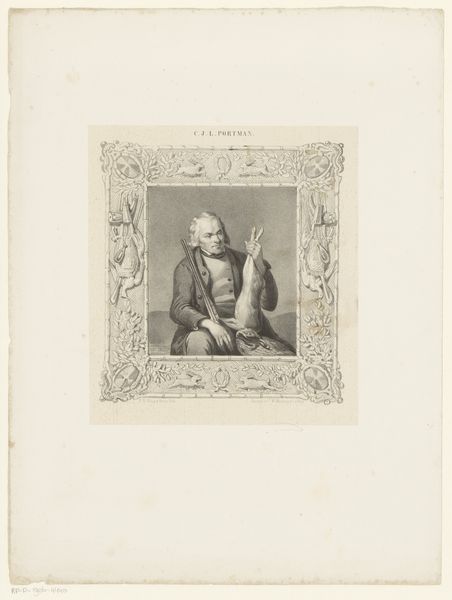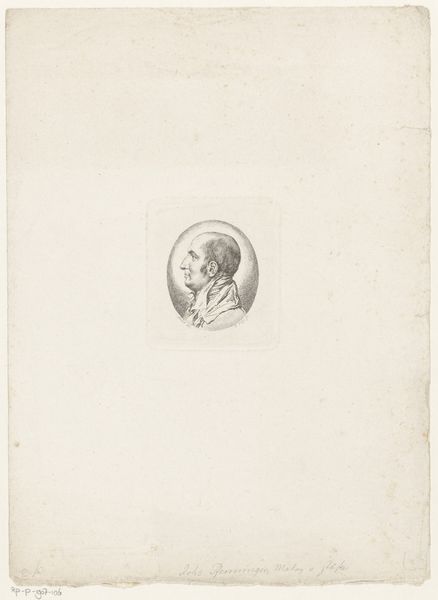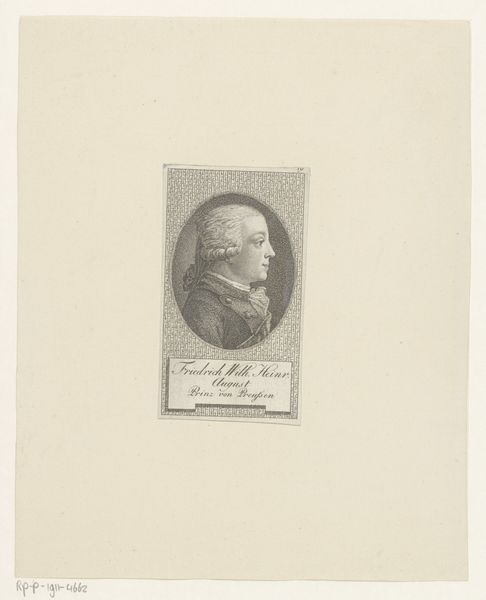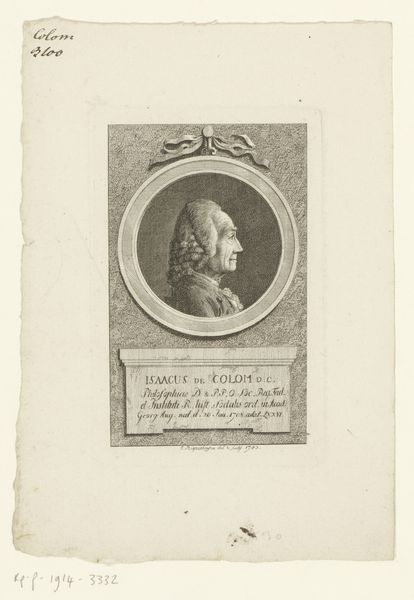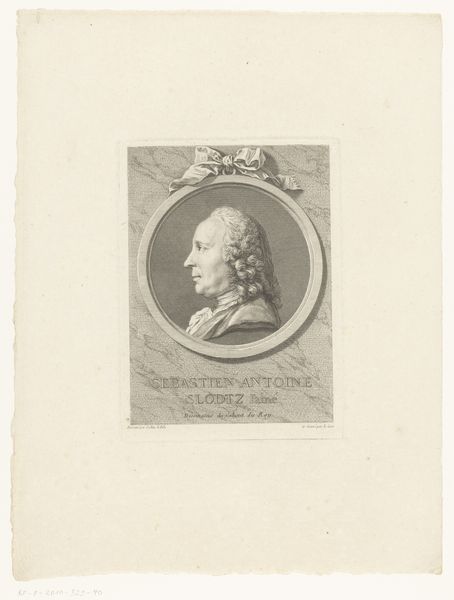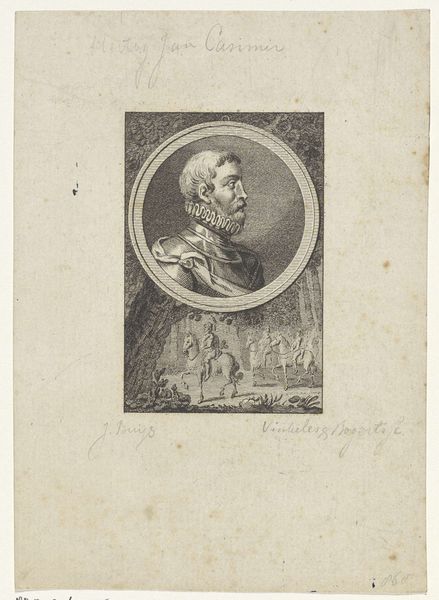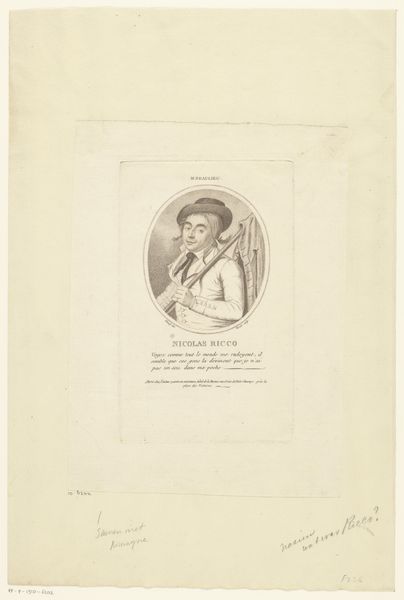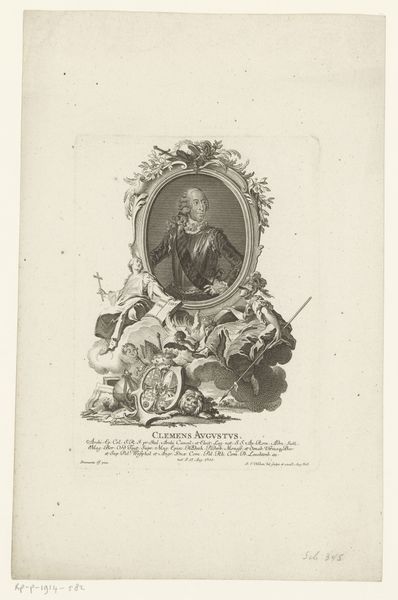
print, engraving
#
portrait
#
neoclacissism
# print
#
old engraving style
#
history-painting
#
engraving
Dimensions: height 135 mm, width 80 mm
Copyright: Rijks Museum: Open Domain
Editor: We're looking at a portrait today, an engraving titled "Portret van Louis-Abel Beffroy de Reigny," created between 1776 and 1824, currently housed in the Rijksmuseum. It's quite a formal image, yet the sitter seems almost… melancholy? How do you interpret this work? Curator: It’s interesting you pick up on the melancholy. Let's consider the era, the late 18th century, a time of immense social and political upheaval leading up to the French Revolution. This is Louis-Abel Beffroy de Reigny, a writer and satirist. Knowing that, how might his apparent pensiveness connect to the socio-political context? Editor: Perhaps his expression reflects a deeper commentary on the pre-revolutionary anxieties of the time? A kind of quiet critique masked within the conventions of portraiture? Curator: Exactly! He's holding a quill, poised to write. The "pen being mightier than the sword" rings true here. Consider the power of the written word in challenging the established order. The Neoclassical style, typically associated with order and reason, here contains a hint of dissent, a silent challenge. Is he supporting or critiquing the emerging narratives of revolution, I wonder? Editor: So, this portrait is not just a depiction of an individual, but also a coded commentary on the era's intellectual and political currents? Curator: Precisely. And by understanding that, we can view this portrait as a snapshot of the conflicting ideologies that marked the beginning of a new era. The portrait performs respectability but possibly undermines it. It may express its values with some degree of irony. Editor: That's fascinating; I’d never considered a portrait could be such a layered expression of social tensions. Curator: These images provide opportunities to consider alternative meanings beyond the surface of aesthetic appeal. Editor: This has truly broadened my understanding of how historical context can radically alter one’s interpretation of a seemingly straightforward image.
Comments
No comments
Be the first to comment and join the conversation on the ultimate creative platform.

